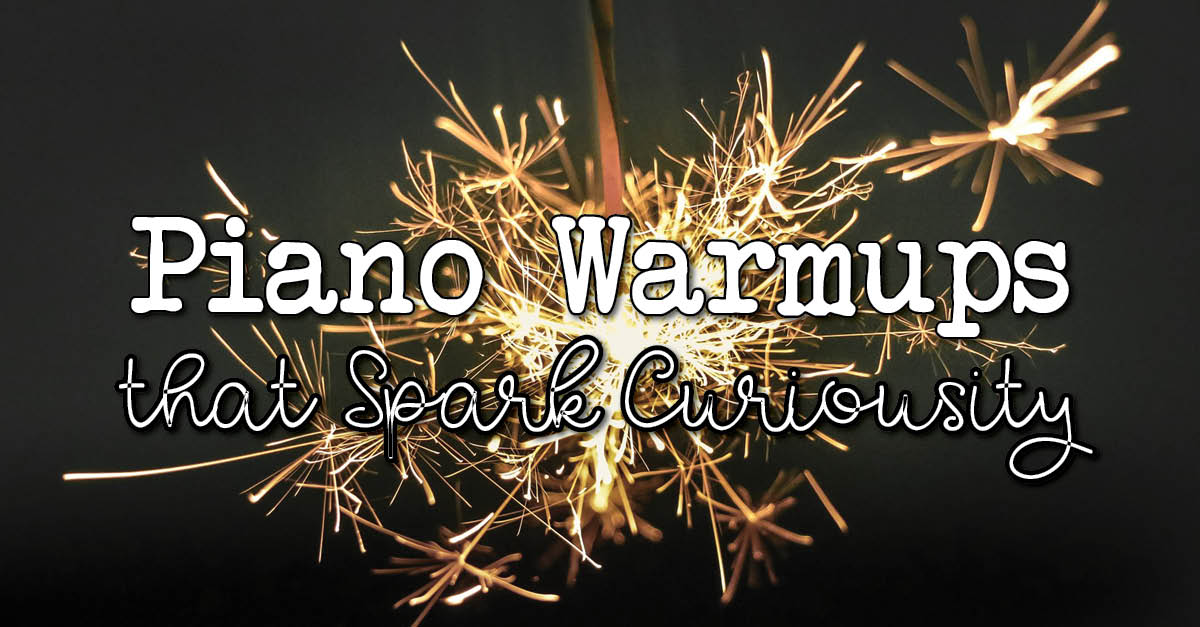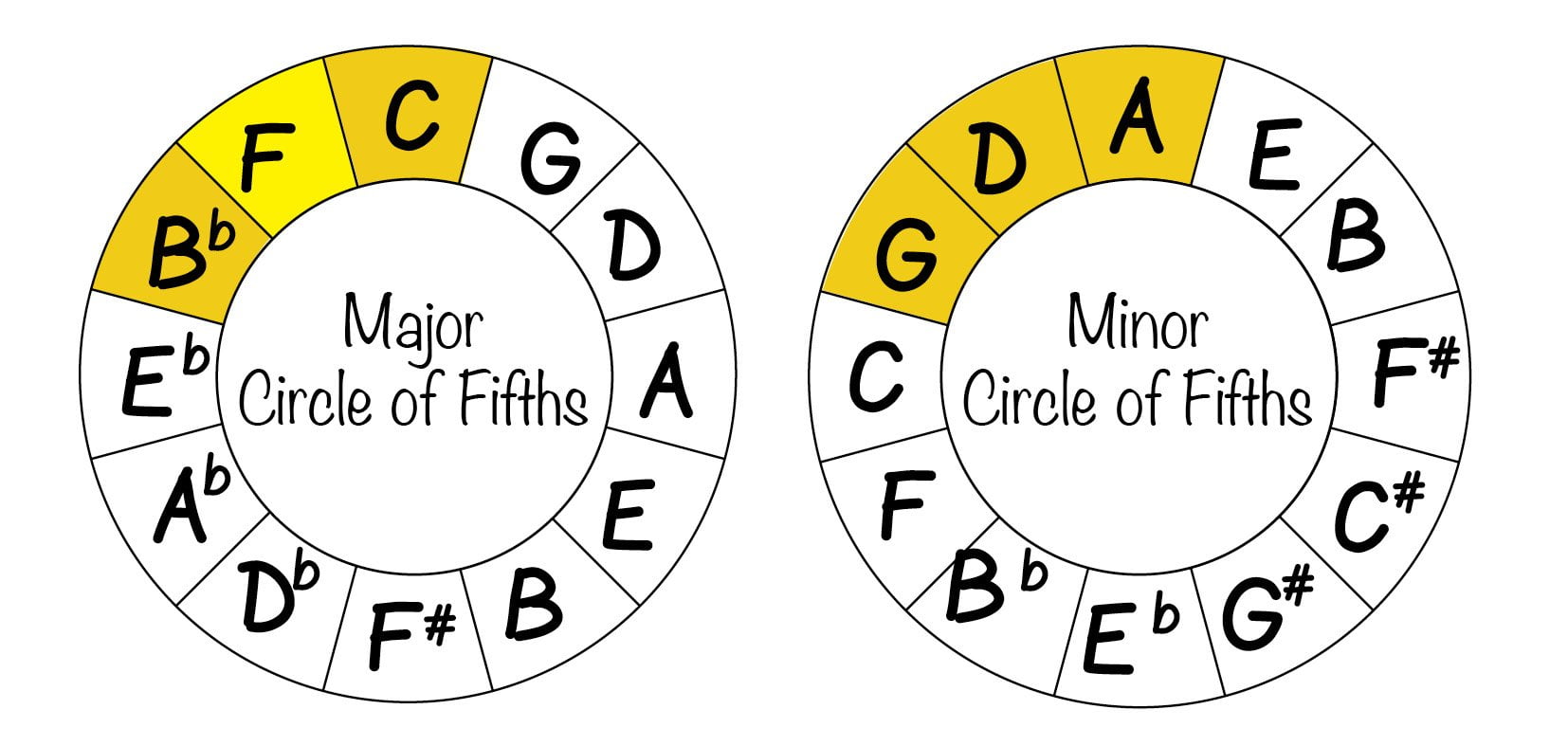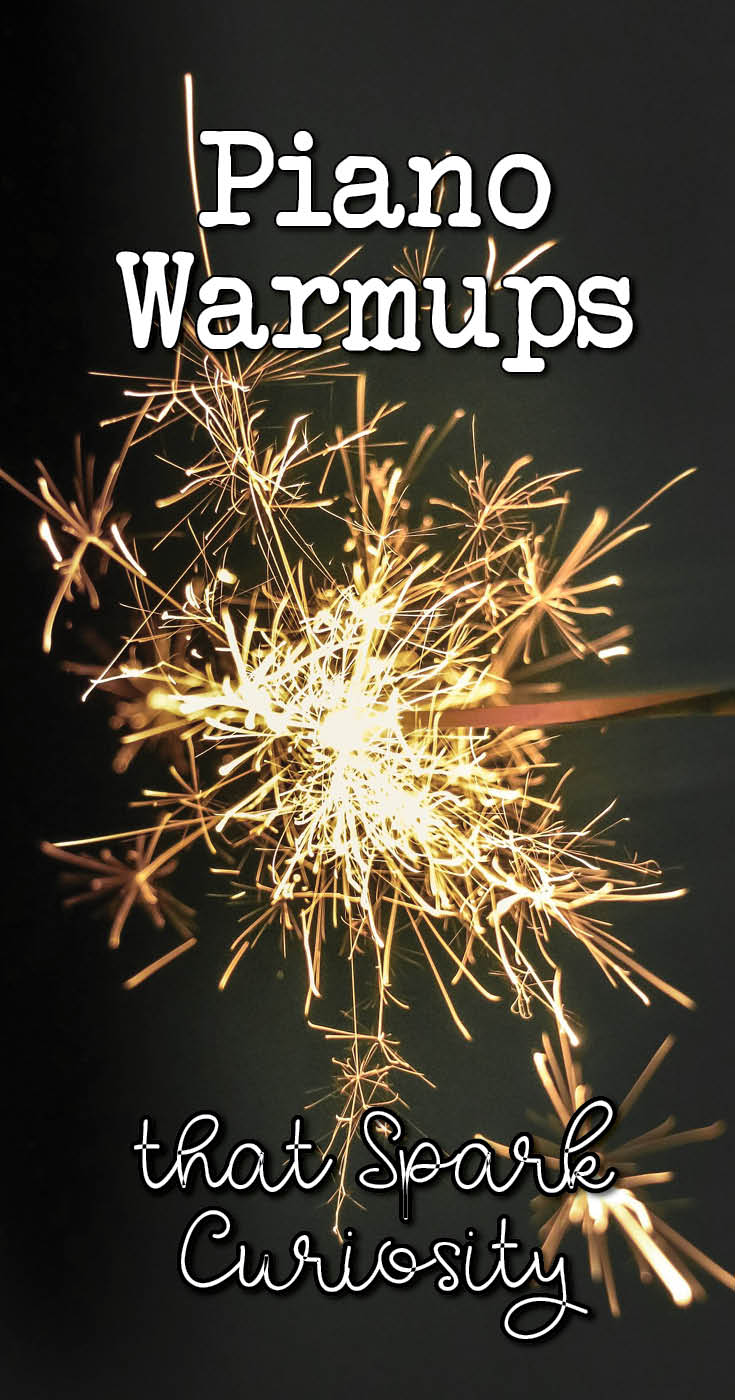What’s the first thing you do when your student walks in the door? How do you get each lesson started? It’s a good idea to do some sort of piano warmups at the start of each lesson, it’s an even better idea for those warmups to knock your students’ socks off.

I want my students to see their piano lessons as a place full of exploration and wonder. Yes they need to learn theory, reading, scales, technique, but I also want to teach them how to think for themselves. Too much of education is still about memorising and drilling.
Music lessons should spark student curiosity.
Here’s five ways you can inspire more curiosity in your students at the start of each lesson. Get them off on the right track and reenergise your students this week with one of these fun piano warmups.
Improvisation
As soon your student walks in the door, start playing a simple accompaniment and ask them to join in with some improvisation. Don’t explain or discuss it too much, just hop right in.
You could use any scale, pentascale or other pattern they’ve been working on for these piano warmups. If they’re just starting out ask them to play the black keys while you vamp in G flat major. Works like a charm.
If you want more improvisation ideas to try out you should check out Forrest Kinney’s Pattern Play series. I wrote about how I use Pattern Play here.
And for more about the why (and the how to fit it in) of improvisation, check out this post on The Big Secret of Teaching Improvisation.
Echoes
Place your hand, and your student’s hand in any five finger pattern. Ask them to echo back to you exactly what you play, gradually increasing the difficulty of your musical phrases.

Swap and ask them to make musical phrases for you to echo.
These piano warmups might seem like only ear training, but they’re actually much more than that. By echoing you first and then trying to create their own phrases your students will be learning so much about melodic structure and contour.
Question Answer
Similarly to echoes place both your hands in the same finger pattern on the keys. This time though, ask your student to answer your musical question.
If they’re hesitant, give them some examples of clear musical questions and answers. Try finishing the question on the dominant and the answer on the tonic.
Make sure to swap roles once your student becomes comfortable. My students get such a kick out of the answers I improvise to their questions.
Fancy Scales
Put those scales to good use. Take any scale your student knows and make it fancier (and more fun). Kick off your lesson not with the traditional run through of scales and arpeggios but with funky rhythms, backing tracks or fiendishly difficult scale challenges.
For creative scale ideas try this post ‘Making Scales Stick – 7 Different Ways to Practice Scales’.
Piece Revisits
Take a wee walk down memory lane with your student. Pick out any piece your student hasn’t played for a while. You could go back to the start of their book, or even an old book if you have a copy to hand.
First ask them to play through the piece as it’s written.
Then start the fun. Ask them what they might add to this piece now that they have progressed with their piano skills. They could add new harmonies, off beat rhythms, dynamics, phrasing, pedalling or embellishments.
Go wild with the additions and then play it again. Which version do they prefer?
Chord Progressions
Put those books your student hands you straight down on your teaching table. You won’t be needing those for the first 5 minutes. 😉

Help your student to compose their own chord progression. Depending on their level this could look several different ways:
- Absolute beginner: Ask them for 3 random numbers from 2-7 and fill in the blanks I _ _ _ :|I. Play their progression (in C major) back to them and make adjustments as they like.
- Late beginner: Show them all the chords in C major and help them to arrange them into a four chord progression they like.
- Intermediate and above: Go the full Garageband enchilada as detailed in this post ‘Garageband to the Rescue’.
Once you have their chord progression give them the opportunity to improvise over it. You can either play the progression yourself while they improvise it, or record them playing it and loop it in an app such as Garageband or Loopy.
What’s are your favourite piano warmups?
Do you have a routine way to start off your lessons? Do you switch it up each week?
Why do you start lessons the way you do? Tradition? Efficiency? Fun?

Improv is my favorite fun lesson opening technique. Now I need to try this echo idea with Christmas melodies and sneak in some phrasing practice.
Ooh great idea Whitney, have fun with it!
You have fun ideas, Nicola! Sometimes I’m a bit overwhelmed by all of our options but a studio revamp (I’ll look at this as a piano teaching New Year’s resolution) sounds great.
It certainly can be overwhelming Sarah, we feel like we need to do everything! I hope the 30 Day Studio Refresh in January will help you with that feeling. Having just one task to try each day should clear things up. After all we do only have two hands and one brain – we can only do one thing at a time. 🙂
These are great ideas! Keeps kids motivated and interested and starts them off on the right foot.. Thank you so much for posting.
Thanks Katie, have fun!
Thanks for the great ideas Nicola! I like to combine chord progressions with improv as I find my students struggle to come up with melodies and ideas on the spot but for some reason it’s easier after they’ve played the chords and I’ve done the melody! I’m definitely going to try the question and answer warm up this term